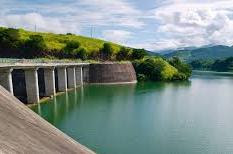Water as a Renewable Energy Source
Water Energy is one of the five largest renewable energy sources. This energy can be harnessed and converted into electricity and power generation without leaving greenhouse gas emissions like those produced by power plants that use fossil energy.
In contrast to other renewable energy sources, water will continue to produce power without stopping and its availability will continue to be generated by the hydrological cycle. Hydroelectric power plants (PLTA) are generated from the potential energy of water which is converted into mechanical energy by turbines and this energy is then converted into electrical energy by generators by utilizing altitude and air speed.
- Pico Hydro which produces 5 kW,
- Micro Hydro which produces 5-100 kW,
- Mini Hydro which produces power above 100 kW, but remain below 1MW and
- Dams / large hydro with a generated power of more than 100 MW. Indonesia has used water as a power plant, one of which is the Cirata hydropower plant, Purwakarta.
The power plant, which has been under construction since 1983, is not the main generator in the Java-Bali power grid, but is used as a backup power plant. If all 8 turbines in the hydropower plant are functioning, the Cirata hydropower plant will only be able to supply around 4 percent or around 1,008 MW of the electricity load for the island of Java, which reaches 23,000 MW. Apart from Cirata, there are also other hydroelectric power plants in Indonesia such as PLTA Saguling, Jatiluhur and Lamajan.
Apart from being a generator, hydropower is also beneficial for the tourism sector. Natural scenery in the form of mountains, lakes and culinary tours are tourism attractions. Natural scenery is not only a tourist attraction in the Jatiluhur dam area, there are also other tourism objects available there such as swimming pools and water skiing which directly overlook the lake.
- disrupting the balance of river or lake ecosystems,
- construction that takes a long time and costs, and
- damage to dams which can cause a large risk of accidents and other losses.





Post a Comment for "Water as a Renewable Energy Source"